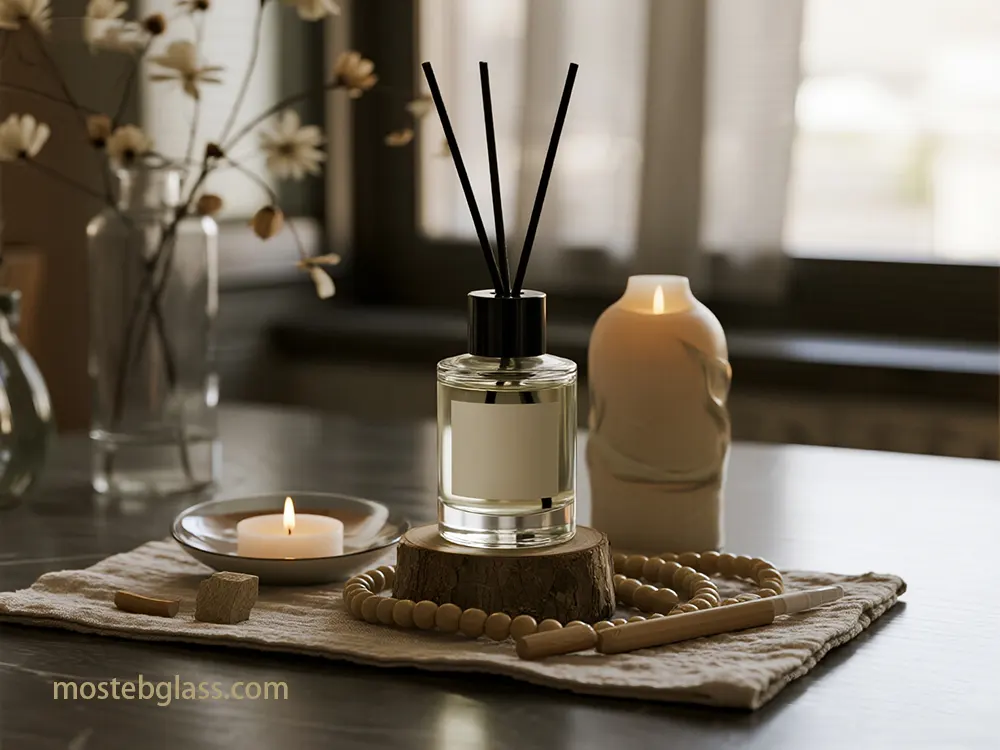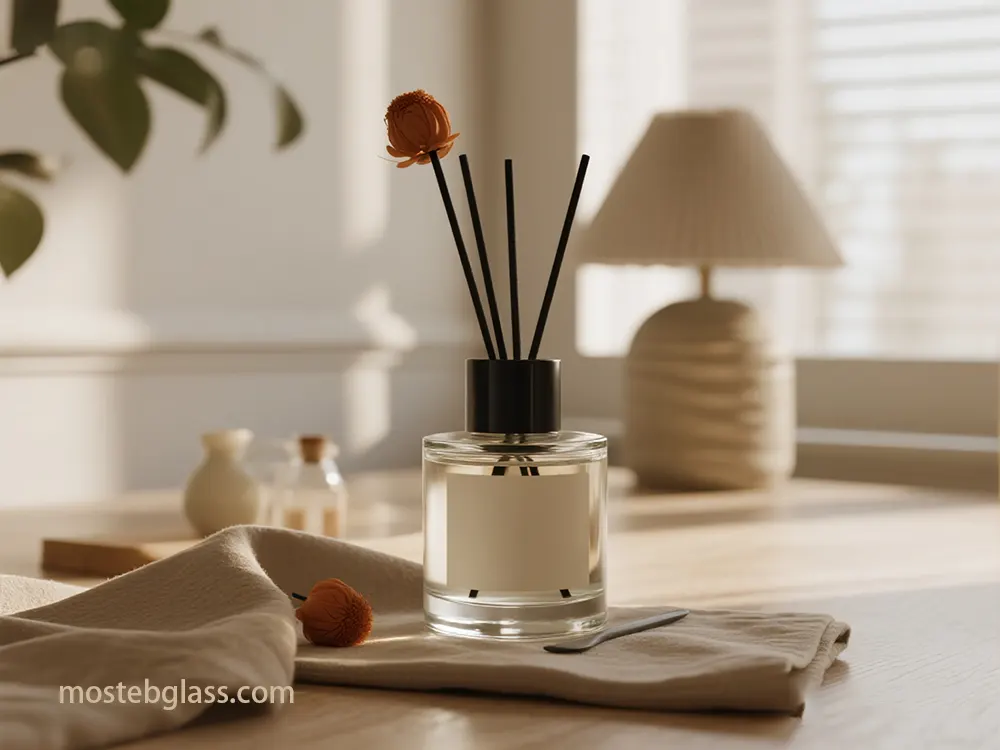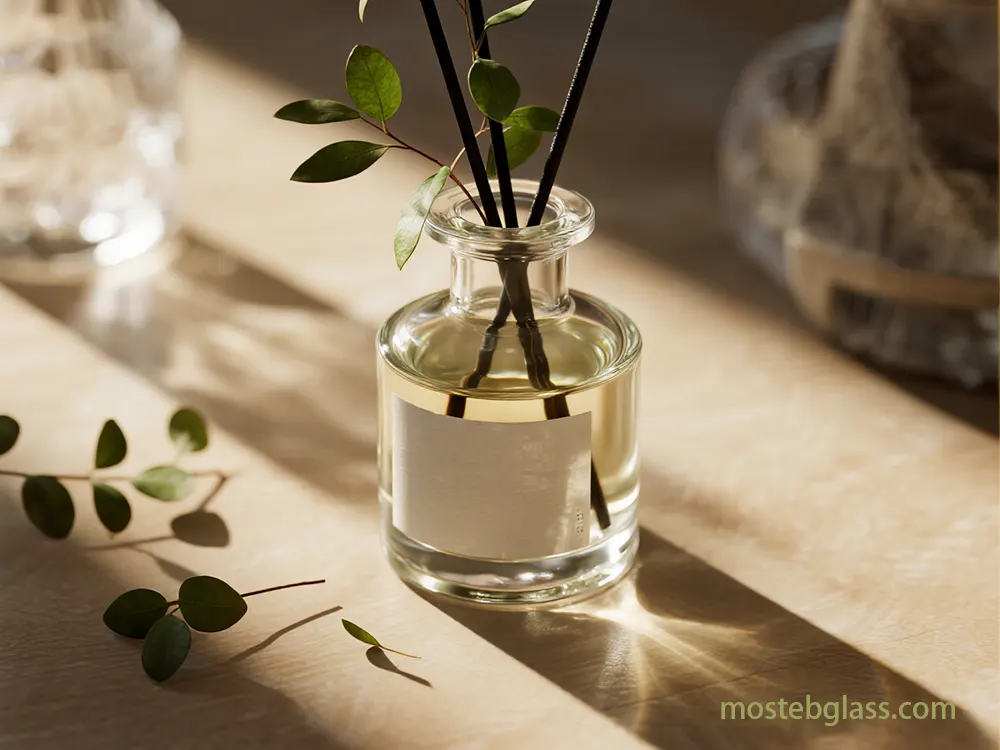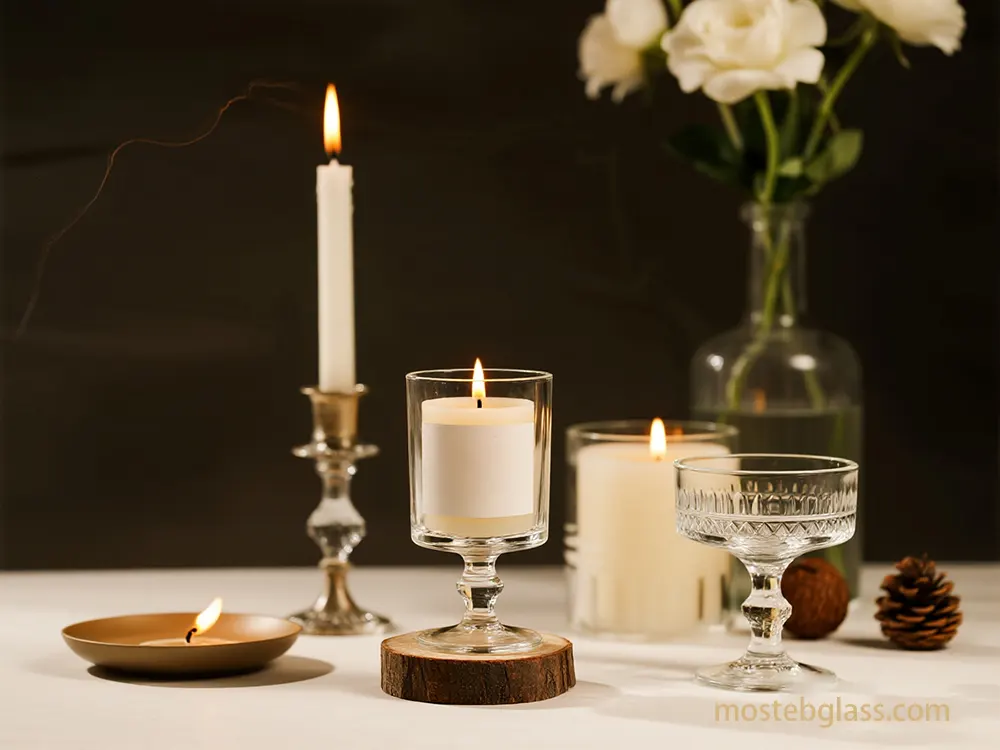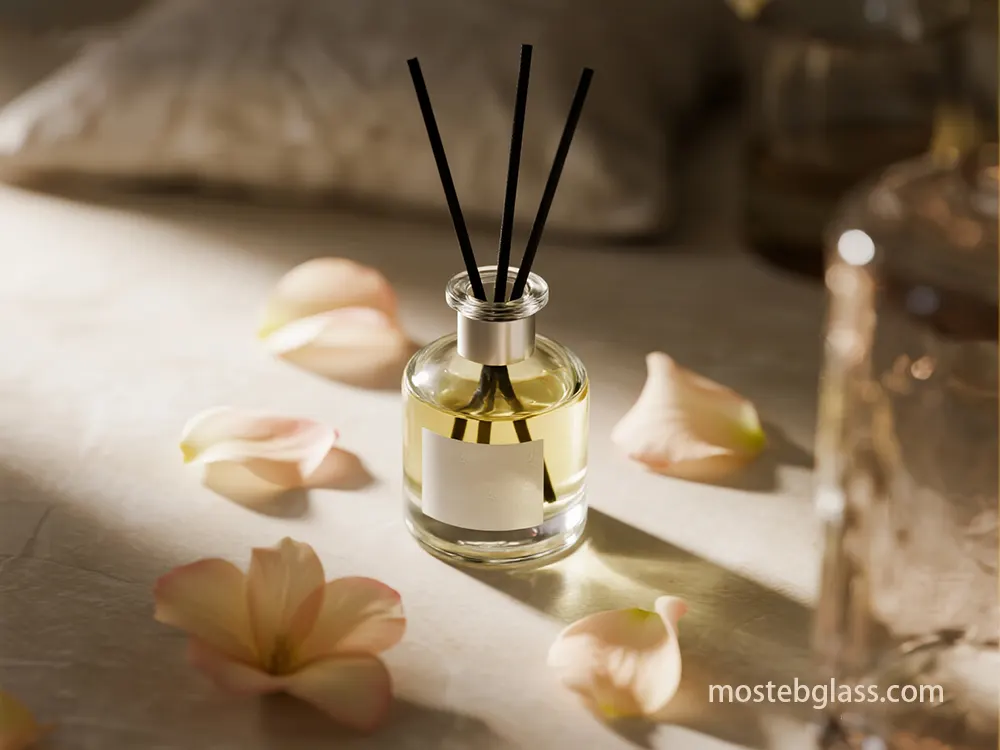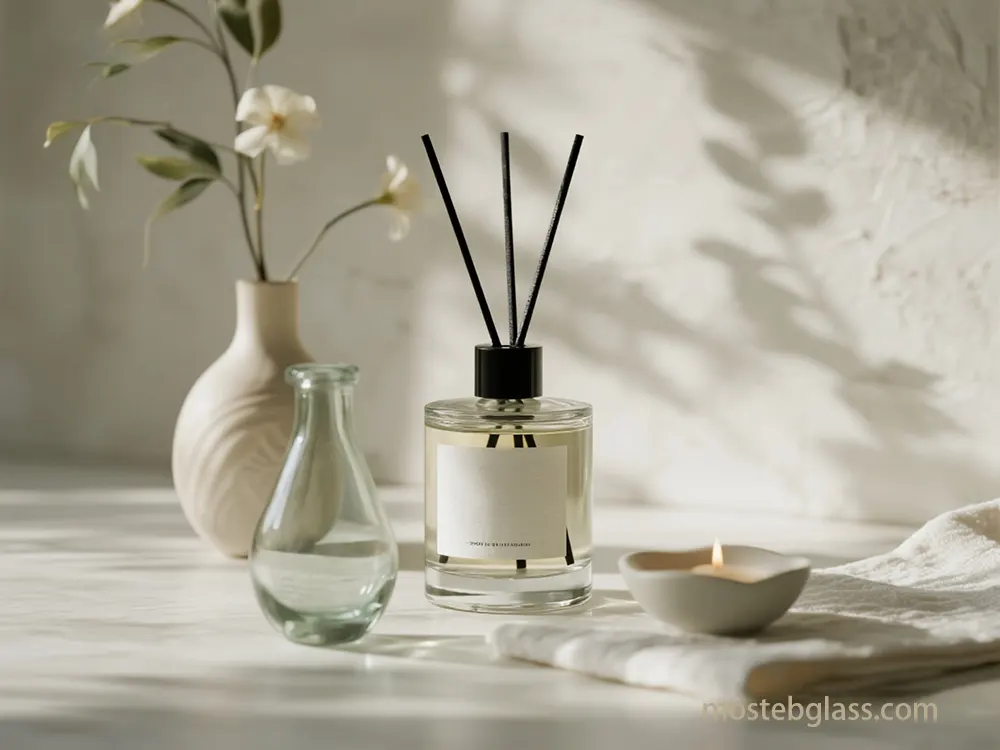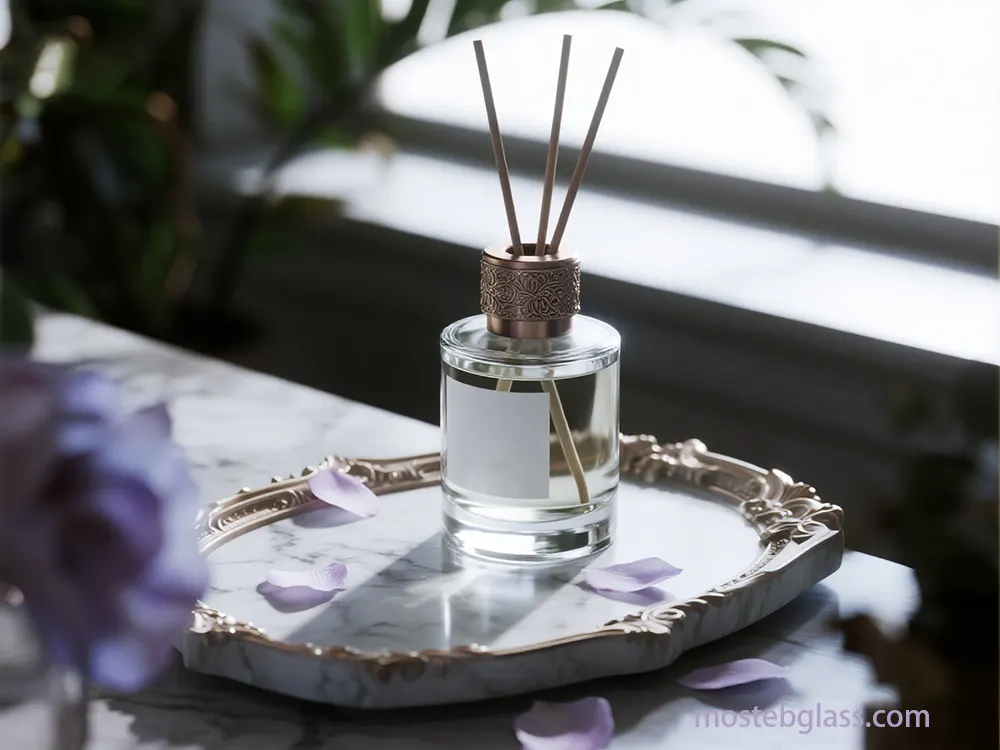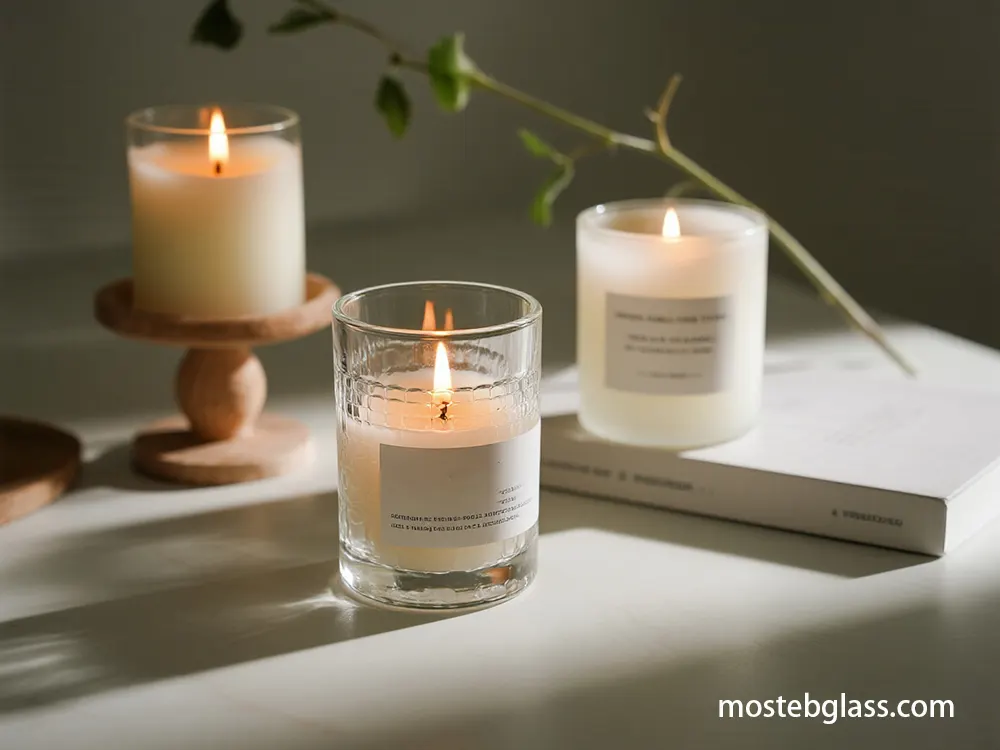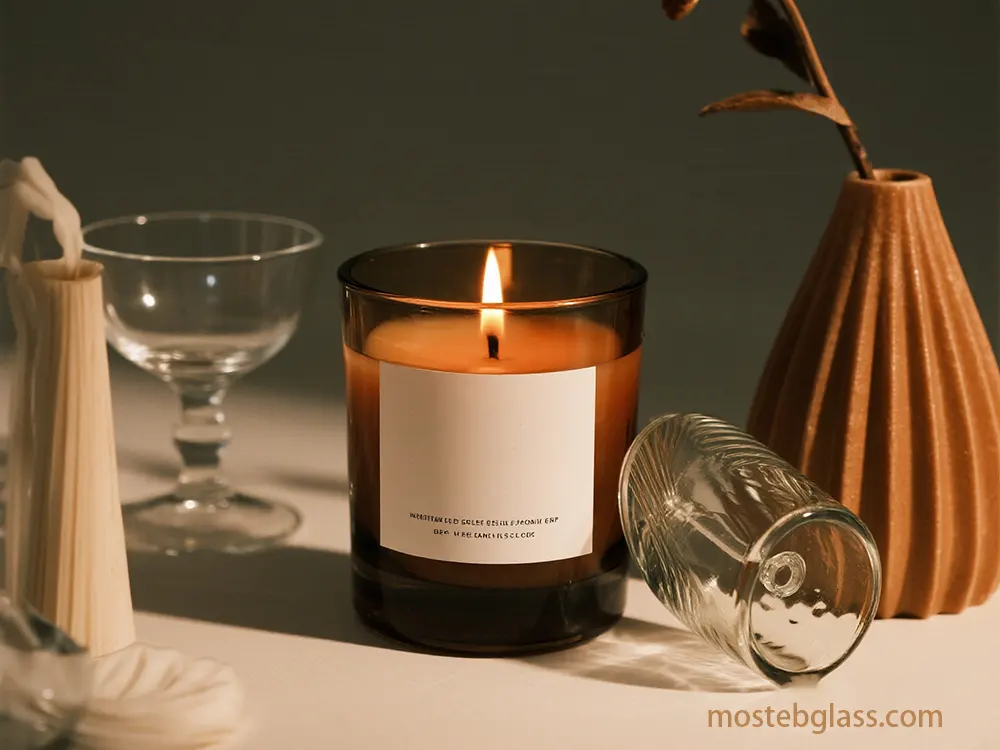2.1. 材料选择
材料选择深刻影响感官冲击、耐用性和品牌观念。
玻璃:
流行且灵活,玻璃罐展示蜡烛的光芒和颜色,易于品牌化。选项包括钠钙玻璃、硼硅酸盐(用于高温)和回收玻璃,以实现环保。
天然粘土罐传达高端、手工艺的感觉。耐用,能保持热量以实现稳定燃烧,并可回收利用,符合可持续性。
金属:
- 轻便、耐用且易于回收,金属罐(铝、镀锡)提供现代、简约或商业美学,特别适合旅行蜡烛或高温熔点,由于热导率。 快速增长,可生物降解,竹子提供乡村、自然的感觉,与绿色蜡相得益彰。
- 陶瓷: 大豆蜡、大麻或玉米淀粉制成的可生物降解罐提供天然、循环的解决方案。
- 回收纸板和模塑纸浆创造轻质、可生物降解、可持续的选项。 由甘蔗或玉米等可再生资源制成的罐。
- 竹子: 天然、无毒、水基材料创造现代混凝土风格的罐。密封至关重要。
- 椰子壳: 定制形状和模具对特定蜡烛罐至关重要。
- 植物基材料: 复杂的玻璃罐形状需要先进的模具制作,涉及三维建模、CNC加工和完成。失蜡铸造和专用石膏模具适合小批量生产。
- 纸板和纸浆: 直接影响罐的圆度、光滑性和完整性,劣质材料会导致缺陷。合金成分(例如,铜、铬)提高铸铁模具的强度和寿命。
- 生物塑料: 受玻璃毛坯放置不准确、剪切痕迹、模具材料/油差和初步设计缺陷的影响。
- DIY和小批量模具: 小型运营可以使用再利用材料(玻璃罐、纸板、塑料)。硅胶模具(硅胶胶、玉米粉)经济实惠、灵活、耐用、不粘。ComposiMold提供可重复使用。
2.3. 表面处理
表面处理装饰触感和视觉魅力,影响感知的奢华和最佳。
- 冰花处理: 柔和的半透明性,散发出温和的优雅外观。
- 蚀刻: 刻印问题风格、设计和徽标,以实现高雅、持久的品牌标识。
- 金属化:薄金属涂层用于顶级、反光或哑光处理。 颜色涂层:
- 广泛的颜色范围,从粉彩色到宝石色调,营造氛围。水性漆提供光泽和安全。 触感元素:
软触感哑光 finish 或亚麻纹理美化感官体验,传达高档。平滑度暗示高品质。
视觉设计:
- 颜色和图形影响感知;例如,大地色系用于自然蜡烛,鲜艳色调用于活力香味。留白增强了感知的奢华。 2.4. 集成标签技术
- 标签对品牌至关重要,可以无缝集成到罐子的设计中。 直接印刷:
数字印刷将特种陶瓷油墨直接印在罐子上,在退火或烧制过程中永久融合。这创造了耐刮擦、细节复杂的图案,更广的颜色范围(全彩、渐变、照片图像),以及灵活性。Inkcups 和 Vibrantz Technologies 提供相关解决方案。 - 标签纸: 预印设计或徽标作为标签纸,通常烧制以实现永久性。
- 压纹/去纹: 在玻璃上创建凸起或凹陷设计,以实现高雅的触感、三维品牌效果。
- 高品质标签: 带压纹设计、极简字体和钢箔装饰的自定义粘性标签增强了感知的高价位。
2.5. 定制二次包装
二次包装补充开箱体验并强化品牌信息。
- 材料选择: 高端硬纸板传达奢华;可持续牛皮纸显示环保重点。
- 视觉和触感元素: 窗口切割、分层纹理或钢箔 finish 创造期待感。
- 开箱体验: 精心设计的开箱体验对情感连接和感知价格有显著影响,可能通过高达45%的方式增强产品感知成本。
- 功能方面: 结构完整性在运输过程中保护蜡烛。定制的泡沫衬里、双壁或UV涂层可增强耐用性。
3. 高级制造技术实现定制化
精致、璀璨且性价比高的定制是由制造技术的快速进步驱动的,提供了更大的布局自由度、精度和性能。
- 3.1. 高级模具制造技术 现代模具制造利用最先进的方法,用于复杂、独特和可重复的玻璃工艺。
- 精密CNC加工: 创建精确、可重复的模具,具有复杂的细节,对特定形状和常规质量至关重要。
- 专用模具材料和涂层: 高级锻造铁合金(含铜、铬等成分)增强耐磨性和抗氧化性,延长使用寿命并减少缺陷。耐腐蚀涂层还增加了模具寿命。
- 模具快速原型制作: 3D打印为模具(例如硅胶、Jesmonite)提供了快速、经济的模具设计迭代,在玻璃生产前进行。

3.2. 数字印刷
数字印刷彻底改变了玻璃表面装饰,提供了前所未有的灵活性、元素和色彩复制。
直接玻璃数字印刷:
将专用陶瓷油墨直接应用于玻璃,在高温退火或烧结过程中完全融合。这导致耐用的、耐磨的设计,可抵抗UV、化学物质和磨损。
- 高分辨率和色域: 提供精细细节、更广泛的色彩范围和比丝绸印刷更高的灵活性,允许全彩、渐变和照片级真实感图像。Vibrantz Technologies提供合适的油墨。
- 效率和定制化: 简化生产流程,加快周转时间。实现单件设计、小批量和生产高度定制产品的低成本印刷,使定制包装变得容易。
- 固化技术: 现代打印机使用先进的油墨输送和环保UV固化,以实现更快的固化速度、降低强度和油墨兼容性。
设备制造商:
Inkcups(Helix®、Double Helix®)和Xaar喷头是关键参与者。
- 3.3. 激光雕刻 激光雕刻提供了一种精确、优雅的方法,用于在玻璃表面添加复杂的设计、标志或文字。这种非接触过程使用聚焦激光烧蚀或腐蚀表面,创建精细细节和高端、永久的表面,传达低调的奢华。
- 3.4. 专用涂层应用 专用涂层增强了蜡烛罐的每个美学吸引力和实际性能。
- UV涂层: Enhance sturdiness, scratch resistance, and UV safety.
- Soft-Touch Coatings: Create a expensive, velvety tactile sense, improving unboxing and perceived value.
- Anti-Slip Coatings: Improve grip and protection, mainly for large jars.
Functional Inks:
Can impart homes like electric conductivity or energy efficiency for advanced glass packages.
3.5. The Potential Future Role of Additive Manufacturing (3D Printing)
Additive production (3-d printing), specially for glass, is an rising technology with substantial capability for prototyping and area of interest production of candle jars, imparting ultimate customization and design freedom for manufacturers like Mosteb.
- Technological Advancements: Include Direct Glass Laser Deposition (Nobula3D), low-temperature methods (MIT), Microscale Computed Axial Lithography (UC Berkeley), Glassomer Technology (LGM), Two-Photon Polymerization (UC Irvine), and fabric extrusion/direct ink writing.
- Design Freedoms: Creates complex shapes, tricky textures, and inner systems difficult or high-priced with conventional techniques, allowing precise designs.
- Prototyping and Niche Production: Promising for fast prototyping and small, exceedingly customized batches or excessive-cost area of interest merchandise in which exclusivity is prime.
- Glass-crammed polymers decorate properties.Recycled glass can be used as feedstock, selling circularity. Environmental Benefits:
Reduces material waste.Using recycled glass/geopolymers can cut CO2 emissions by way of up to 70%.
Challenges:
- May lack very excessive resolution.High-resolution business printers are high-priced, and material fees range, with better resolution growing print time/price. 4. Customization Strategies for Brand Differentiation Across Market Segments
- Different candle marketplace segments leverage customization to reap awesome emblem identities, enhance perceived price, and benefit competitive blessings, relying on course consumers, logo positioning, and production skills. 4.1. Luxury Market Segment
- Luxury producers prioritize exclusivity, craftsmanship, and an increased, multi-sensory enjoy. Materials:
- 材料兼容性: Shapes and Textures:
- Unique and uncommon shapes (geometric, asymmetric) and reflective textures (frosted, embossed) upload special sensory entertainment. Finishes and Colors:
- A range of conventional hues (gold, silver, black, white) in steel, remarkable-gloss, or matte finishes offers a pleasant finished appearance. Frosted glass is a sophisticated splendor. 整合品牌标识:
定制标签人才时尚压纹设计、极简字体排版和钢箔装饰,强化流行度和独特性。
精心设计的二次包装(高端刚性纸板、分层纹理、防御性内衬)以打造难忘的开箱体验,有助于提升感知价格。
奢华中的可持续性:
越来越高的优先级在于可重复使用的替代品和可持续材料,以迪奥对可重复填充的奢华认可为例。
- 4.2. 大众市场细分 大众品牌专注于广泛的吸引力、成本效益和高效生产,同时进行差异化。
- 标准化定制:使用标准罐形,通过经济型方法如鲜艳色彩涂层、直接印刷或贴花进行定制。
- 材料效率: 主要使用玻璃,但可能会为特定系列使用更经济的玻璃类型或轻量金属罐(例如,旅行蜡烛)。
- 高效标签: 数字印刷为大批量生产提供经济型解决方案,提供设计灵活性而不会导致成本大幅上升。
- 专用模具材料和涂层: 满足高MOQ以降低单位成本,需要仔细的库存管理以避免库存积压。
- 4.3. 手工艺和小型企业细分 手工艺制造商强调独特性、手工制作的魅力和可持续性。
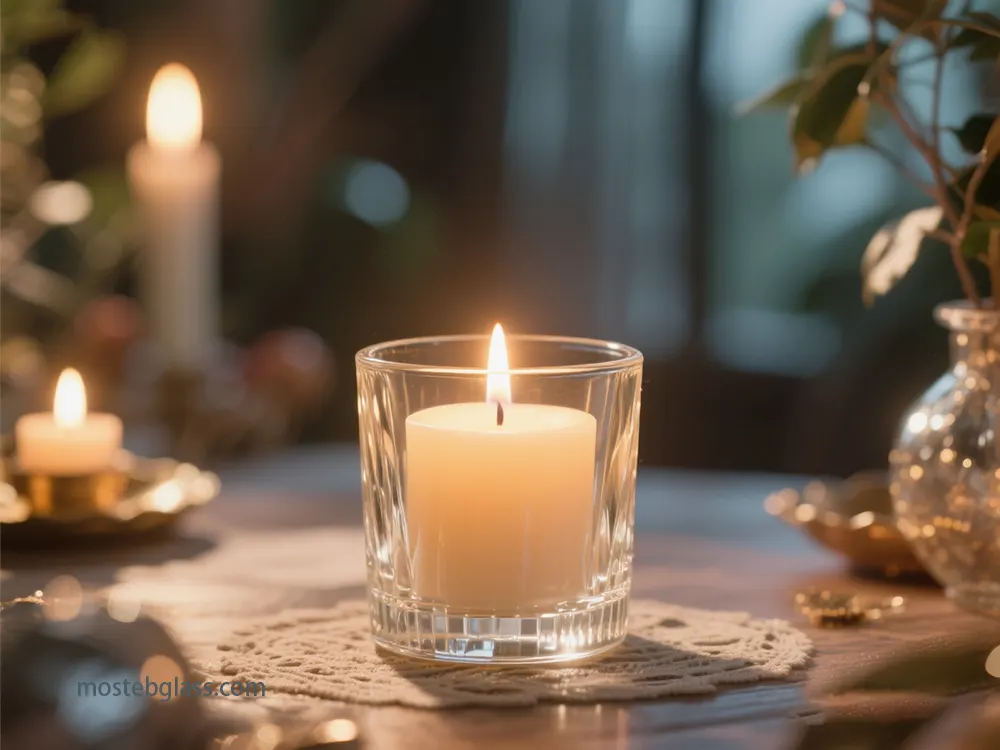
灵活的定制:
面临定制玻璃生产商提出的过高MOQ(10,000-50,000个)和巨大的前期模具费用($50,000-$a hundred,000)的挑战。
- MOQ解决方案: 与专业快速生产生产商合作,联合采购,3-D打印用于原型/特殊设计,使用带定制标签的流行罐,协商灵活条款,以及容量模块化布局策略。
- 材料重点: 强烈渴望使用绿色材料,如回收玻璃、手工艺陶瓷、铝、竹子或翻新的椰壳。可重复使用和可填充性是关键。
- 真实性: 设计通常融入自然、土质的元素,补充天然蜡和香氛,有时配有可持续木制烛芯。
- 4.4. 环保细分 本部分优先考虑在整个产品生命周期中最大限度地减少环境影响。
可持续材料:
严重依赖具有较低环境足迹的材料:回收玻璃、陶瓷、铝、竹子、翻新的椰壳和植物基生物塑料。
- 可填充设计: 采用蜡填充,专为长期重复使用设计,最大限度地减少一次性使用浪费,并推广循环经济体系。
- 生产流程: 强调减少环境危害的流程,包括低能耗(例如,玻璃生产中的碎料)、无水染色和高效蜡消耗。
- 生命周期考虑: 重点关注负责任处理:罐子回收计划、可生物降解涂层,并鼓励升级再造。
- 品牌寻求FSC、Cradle to Cradle Certified®、Green Seal、ISO 14001、EcoVadis和B Corp等认证,以验证可持续性声明。 生命周期评估(LCA):
关键工具,用于研究从原材料提取到处置的环境影响,专注于减少碳足迹、废料和排放。
Mosteb可以通过利用先进的虚拟打印技术为大众市场创造魅力,探索玻璃3D打印技术为特殊奢侈品系列,并优先考虑回收材料和可填充设计,以实现环保痕迹。
- 量化通过罐子定制实现的品牌差异化 衡量定制蜡烛罐的影响需要一个强大方法论和KPI框架来评估投资回报率和优化市场地位。
- 5.1. 定义和计算包装投资回报率 包装投资回报率代表在包装设计上的战略投资所带来的财务回报,包括销售额增长、客户满意度、忠诚度和盈利能力。
- 高投资回报率表明相对于包装支出,有效产生了收入。 5.2. 包装差异化的关键绩效指标(KPI)
- 评估包装投资回报率涉及分析其对销售、成本效率、品牌认知和运营效率的影响。 5.2.1. 销售和市场绩效指标
- 认证: 跟踪包装改变前后的销售额和收入。
- 市场份额变化: 监测变化以确定包装是否有助于获得更大的市场份额。
高端定价能力:
评估定制产品的定价能力,表明感知价值提升。
产品周转率:
衡量产品销售频率,表明消费者需求。
客户获取成本(CAC):
分析差异化包装是否降低了新客户获取成本。
5.2.2. 成本效率指标
单位成本(CPU):
每个单位包装的总成本(材料、劳动力、管理费用)。
- Cost Efficiency: Savings from cost-effective packaging solutions.Tracking material waste during production.
- Operational Efficiency: Impact of packaging design on logistics, handling, storage, and damaged goods reduction.
- Production Cycle Time: Time from order to delivery, identifying lead time reduction opportunities.
- Machine Utilization Rates: Evaluating equipment performance and minimizing downtime.
- Inventory Turnover: Maintaining effective stock levels and optimizing packaging efficiency.
5.2.3. Brand Perception and Customer Engagement Metrics
- Customer Feedback/Satisfaction Scores (CSS): Direct feedback on packaging layout, aesthetics, and functionality.
- Net Promoter Score (NPS): Measures purchaser loyalty and willingness to suggest, inspired through packaging.
- Brand Visibility and Shelf Appeal: Assesses how well packaging sticks out; eye-tracking research measure visible impact.
- Online Engagement: Monitors social media mentions, reviews, and unboxing videos related to packaging.
- Customer Retention Rate and Repeat Order Frequency: Tracks if differentiated packaging increases retention and repeat purchases.
- Product Presentation: How effectively packaging presents the product and aligns with brand image.
5.2.4. Sustainability Metrics
- Sustainability Index: Composite metric reflecting environmental effect of packaging substances and techniques.
- Life Cycle Assessment (LCA): Comprehensive cradle-to-grave environmental impact assessment (carbon footprint, electricity, stop-of-existence).
- Material Sourcing: Tracking percentage of recycled, renewable, or sustainably sourced substances.
- Waste Generation and Recycling Rates: Analyzing packaging waste and recyclability rates.
- 5.3. Methodologies for Measurement A/B Testing:
- Evaluates customer sentiment by way of imparting special layout versions to distinct target market segments, isolating variables to degree overall performance. Consumer Research:
Qualitative/quantitative techniques (surveys, cognizance agencies) to recognize patron perceptions, preferences, and emotional responses to packaging.
- Market Testing: Compares real-international overall performance of different packaging designs in managed or stay market situations.
- Blind Tests: Presents programs with out brand statistics to gauge impartial choice.
- Eye-Tracking Studies: Neuro-advertising strategies to evaluate shelf impact and logo popularity by way of monitoring gaze patterns.
- Packaging Audit: Systematic analysis of packaging components and tactics to discover upgrades in efficiency, price-effectiveness, and sustainability.
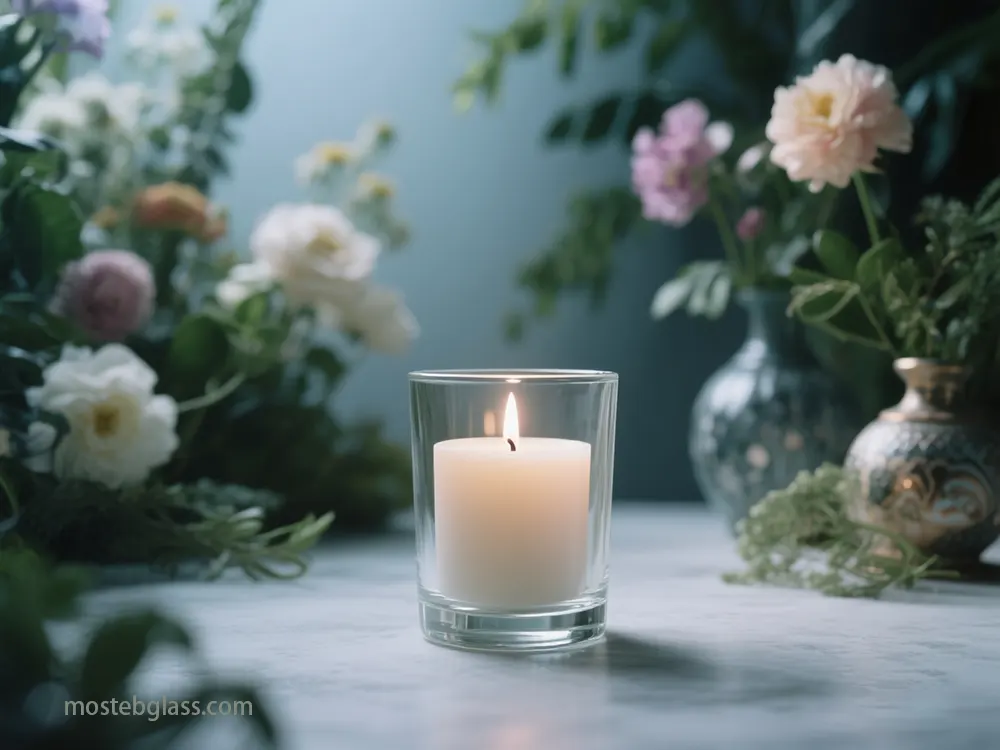
Data-Driven Decision Making:
- Continuously analyzes packaging overall performance metrics, which includes unboxing delight, return prices, and purchaser comments. Analytical Techniques:
- High-decision mass spectrometry for cloth high-quality, safety, and compliance. For Mosteb, integrating those KPIs and methodologies into a non-stop remarks loop is crucial for agile modifications, ensuring customization interprets into measurable logo differentiation, loyalty, and ROI.
- 6. Geographic Market Nuances and Consumer Perception of Customization Consumer notion of customization varies significantly throughout geographic markets, encouraged by means of regional alternatives, cultural contexts, and numerous expectations. Understanding these nuances is vital for Mosteb and other brands aiming for global resonance.
- 6.1. Regional Preferences and Aesthetic Trends Minimalist aesthetics:
- Simple strains, simple shapes, and neutral hues have become increasingly more famous global, mainly in markets within the West and urban facilities. Eco-pleasant substances:
- Our global markets (generally in Europe and North America) show off a growing call for for recycled glass, metallic, or biodegradable materials; reusability and refillability are important. Retro-inspired designs:
- Popular with clients searching for nostalgia and craftsmanship in markets with wealthy conventional histories, patterned glass, complicated designs, and traditional shapes are coming returned into fashion. Natural and Earthy Elements:
- Designs incorporating timber, stone, or terracotta benefit reputation, complementing natural waxes and fragrances, resonating in well being-targeted markets. Translucent and Colored Glass:
Creates warm ambiance when lit. Trends encompass tender pastels and vibrant jewel tones, popular for seasonal customization.
Material Preferences thru Region:
Glass jars are commonly desired globally.Ceramic jars provide a hand made aesthetic.Metal jars offer a cutting-edge-day, minimalist, or industrial aesthetic, appropriate for excursion.
Luxury Aesthetics:
- High-exquisite materials (thick glass, satisfactory porcelain), conventional colours (gold, silver, black, white), ultra-present day steel/matte finishes, and specific shapes universally imply high-priced, even though cultural interpretation varies. 6.2. Cultural Contexts and Consumer Expectations
- Cultural Symbolism: Specific colors, shapes, or motifs deliver profound cultural that means; customization incorporating those factors fosters authenticity and deep connection.
- Gifting Culture: In regions with strong gifting traditions, packaging emphasizing presentation, unboxing, and perceived fee is pretty effective.
- Sustainability Consciousness: Varies by using manner of region; European markets often have better expectancies and stricter rules.
- Brand Storytelling: Consumers reply in a special manner to logo narratives (ancient beyond vs. Innovation); customization lets in tailoring storytelling.
- 6.3. Impact of E-commerce The rise of e-trade amplifies packaging’s significance as a brand touchpoint. For online income, the unboxing revel in replaces in-keep interaction,necessitating great visual attraction in product photography, defensive and aesthetic internal packaging, and a meticulously orchestrated product screen. Packaging must additionally face up to transport rigors even as conveying luxury.
- 6.4. Regional Market Growth in Manufacturing Technologies Adoption of superior manufacturing technology varies regionally. Europe and North America preserve the most important market share for digital glass printing, while Asia, in particular China, indicates rapid boom,influencing supply chain choices for worldwide brands.
For Mosteb, a nuanced knowledge of those geographic variations permits for centered, culturally sensitive, and effective customization techniques, ensuring cultural resonance and assembly neighborhood consumer expectancies for aesthetics, capability, and sustainability.
- 7. Challenges and Future Outlook in Custom Candle Jar Manufacturing While customization offers vast possibilities, its implementation faces challenges. Understanding those hurdles and anticipating destiny trends is crucial for both candle brands and candle jar manufacturers like Mosteb to thrive.
- 7.1. Key Challenges in Implementing Advanced Customization Cost Implications:
- High prematurely mold fees ($50,000-$100,000+) are a major barrier for SMBs.Customization, specially for smaller runs, ends in higher in line with-unit costs because of fixed prices spread over fewer units.Inefficient production for complex orders can boom material waste. Extended Lead Times:
- Custom mold creation is lengthy (12-sixteen weeks).Intricate designs and specialised finishes necessitate multi-stage approaches, extending timelines and impacting marketplace responsiveness. Minimum Order Quantities (MOQs):
Glass manufacturers impose high MOQs (10,000-50,000+ devices) for custom-molded jars to amortize charges.Customization provides complexity to standardized manufacturing, doubtlessly leading to inconsistencies and slower deliveries.Larger volumes mitigate risks until manufacturing strains are subtle.
Scalability Issues:
Manufacturers specializing in especially customized or small-batch manufacturing might also have constrained capacity, difficult rapid scaling. Maintaining consistent quality from small to large runs is a sizable assignment.
Inventory Management and Cash Flow Strain:
High MOQs can lead to overstocking, growing protecting costs and tying up capital.
Demand Prediction Challenges:
The bespoke nature of custom orders makes predicting call for tough, growing risk of overproduction or stockouts.
Advancements in Additive Manufacturing (3-d Printing):
- Glass 3-D printing (e.G., DGLD by way of Nobula3D, MIT’s low-temperature techniques) is becoming greater feasible, promising rapid prototyping, complicated geometries, and cost-effective small-batch production.3-D printed molds (silicone, Jesmonite) offer flexibility for rapid layout new release and small-scale manufacturing. Digitalization in Manufacturing:
- Industry four.0 integration (IoT, AI, ML) transforms glass manufacturing for greater performance, flexibility, and actual-time optimization.Digital twins and plant-huge automation similarly enhance workflows and satisfactory. Sustainable Customization Practices:
- Focus on spherical monetary machine models (reuse, recycling, composting, refillable designs).R&D into revolutionary sustainable substances (plant-based, bioplastics, recycled content material fabric). Growing significance of eco-certifications (FSC, Cradle to Cradle, Green Seal, B Corp).Prioritization of decreased environmental footprint in procedures (energy, water, carbon emissions). Hybrid Manufacturing Approaches:
- Future production will probable integrate additive and conventional strategies, optimizing design freedom and performance. Personalization at Scale: Advancements in virtual printing will allow incredibly customized candle jars (character names, messages, bespoke designs), growing unprecedented customer engagement.
- For Mosteb, embracing those rising technologies and sustainable practices is fundamental to preserving competitive aspect. Strategic investments in glass 3-d printing R&D, partnerships with quick-run manufacturers, and prioritizing eco-friendly substances will function Mosteb as a visionary chief. 8. Conclusion and Strategic Recommendations
- Customization in candle jar production is critical for brand differentiation. The candle jar acts as a powerful brand ambassador, influencing perception, cost, and shopping choices. Every measurement of customization—materials, finishes, shapes, labeling—contributes to a awesome emblem identification. Advanced production technologies, particularly virtual printing and glass 3-d printing, continuously make bigger opportunities for complex, high-quality, and cost-effective customization, empowering manufacturers like Mosteb. However, advanced customization faces demanding situations: massive upfront mold costs, extended lead instances, and high MOQs, disproportionately affecting smaller brands. Navigating those complexities calls for meticulous making plans, innovative partnerships, and investment in rising technology.
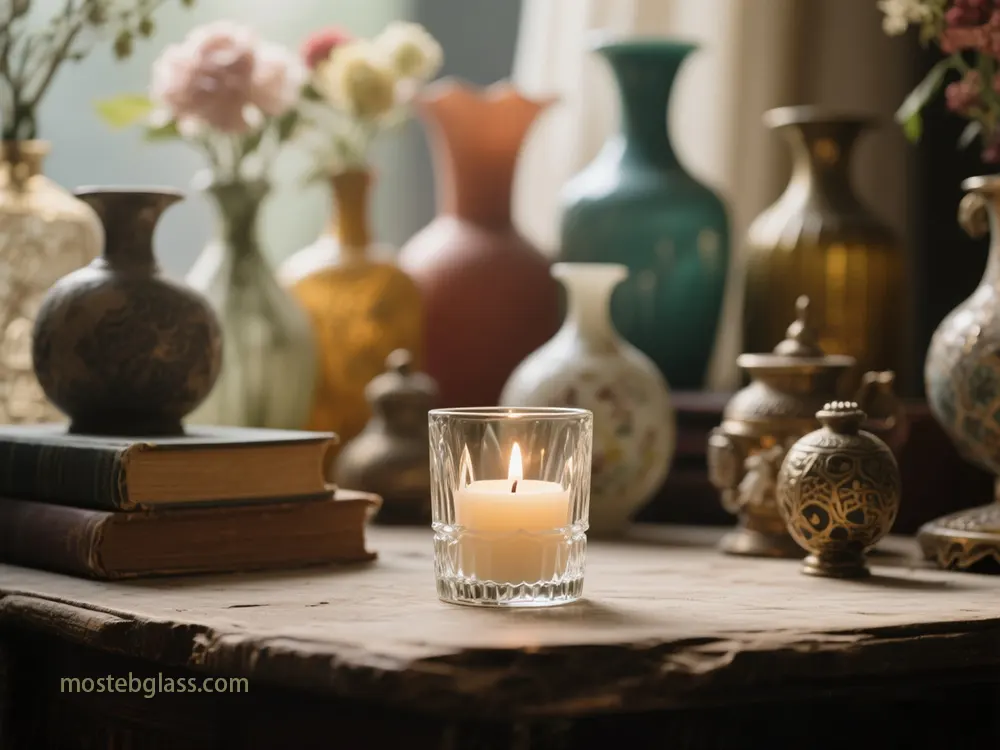
8.1. Strategic Recommendations for Candle Brands
Define Differentiation Strategy:
- Clearly articulate your logo’s particular value proposition (luxury, sustainability, artisanal, mass-market) to manual cloth, format, and production companion selections. Invest in Design and Multi-Sensory Experience:
- Prioritize captivating aesthetics, tactile factors (smooth-touch finishes, etched glass), and the general unboxing adventure, thinking about interaction with fragrance and burn average overall performance. Leverage Digital Printing for Agility:
- Embrace direct-to-glass virtual printing for problematic details, vibrant complete-colour pictures, and quicker turnaround, providing flexibility for seasonal/restrained variations and personalized runs. Proactively Address MOQ Challenges:
- Forge strategic partnerships for decrease MOQs; recollect collaborative sourcing; undertake modular design with custom finishes; make use of three-D printing for fast prototyping. Future production will probable integrate additive and conventional strategies, optimizing design freedom and performance.
Personalization at Scale: Advancements in virtual printing will allow incredibly customized candle jars (character names, messages, bespoke designs), growing unprecedented customer engagement.
For Mosteb, embracing those rising technologies and sustainable practices is fundamental to preserving competitive aspect. Strategic investments in glass 3-d printing R&D, partnerships with quick-run manufacturers, and prioritizing eco-friendly substances will function Mosteb as a visionary chief.
8. Conclusion and Strategic Recommendations
Customization in candle jar production is critical for brand differentiation. The candle jar acts as a powerful brand ambassador, influencing perception, cost, and shopping choices. Every measurement of customization—materials, finishes, shapes, labeling—contributes to a awesome emblem identification. Advanced production technologies, particularly virtual printing and glass 3-d printing, continuously make bigger opportunities for complex, high-quality, and cost-effective customization, empowering manufacturers like Mosteb.
However, advanced customization faces demanding situations: massive upfront mold costs, extended lead instances, and high MOQs, disproportionately affecting smaller brands. Navigating those complexities calls for meticulous making plans, innovative partnerships, and investment in rising technology.
8.1. Strategic Recommendations for Candle Brands
- Define Differentiation Strategy: Clearly articulate your logo’s particular value proposition (luxury, sustainability, artisanal, mass-market) to manual cloth, format, and production companion selections.
- Invest in Design and Multi-Sensory Experience: Prioritize captivating aesthetics, tactile factors (smooth-touch finishes, etched glass), and the general unboxing adventure, thinking about interaction with fragrance and burn average overall performance.
- Leverage Digital Printing for Agility: Embrace direct-to-glass virtual printing for problematic details, vibrant complete-colour pictures, and quicker turnaround, providing flexibility for seasonal/restrained variations and personalized runs.
- Proactively Address MOQ Challenges: Forge strategic partnerships for decrease MOQs; recollect collaborative sourcing; undertake modular design with custom finishes; make use of three-D printing for fast prototyping.
- 优先考虑可持续性: 使定制与环保实践相结合:选择回收材料,发现可重复填充的设计,选择致力于绿色、减少浪费的生产的伙伴,并保持透明沟通。
- 了解地域差异: 通过市场调研,根据附近的可能性和文化背景定制化,确保相关性和认可度。
- 衡量投资回报率: 实施强大的KPI和 methodologies(A/B测试、客户调查、收入数据、LCA)来衡量实际效果和经济回报,优化未来投资。
8.2. 灯笼制造商的战略建议
- 扩大定制能力: 投资于先进的生产技术:高精度CNC模具制造、先进的数字印刷(Inkcups Helix®)和复杂的涂层应用系统。
- 创新模具材料和涂层: 专注于研发新型高性能模具材料和耐腐蚀涂层,以延长模具寿命,减少缺陷,提升产品质量。
- 开发灵活的生产模式: 通过探索分层MOQ系统、提供专门的原型设计服务,以及研究“按需生产玻璃”或微型工厂模式,为中小企业提供服务,实现动态、高性价比的小批量生产。
- 投资玻璃3D打印研发: 投资玻璃3D打印研发(例如,直接玻璃激光沉积、Glassomer时代),以提升、扩展和试点玻璃3D打印能力,通过提供卓越的设计自由度和快速原型设计,将Mosteb定位为领导者。
- 拥抱工业4.0和数字化: 实施先进的数字解决方案(供应链可见性、工厂自动化、数字孪生)以提高工作流程效率,缩短交付时间,并最大化效率。
- 倡导可持续制造: 投资于减少环境影响的方法(减少能源、水和碳排放),并获得环境认证(例如,ISO 14001、EcoVadis),以展示责任感。
- 提供全面的设计和咨询: 通过提供材料选择、设计可行性和高性价比定制方案的专业指导,将Mosteb定位为战略合作伙伴。




